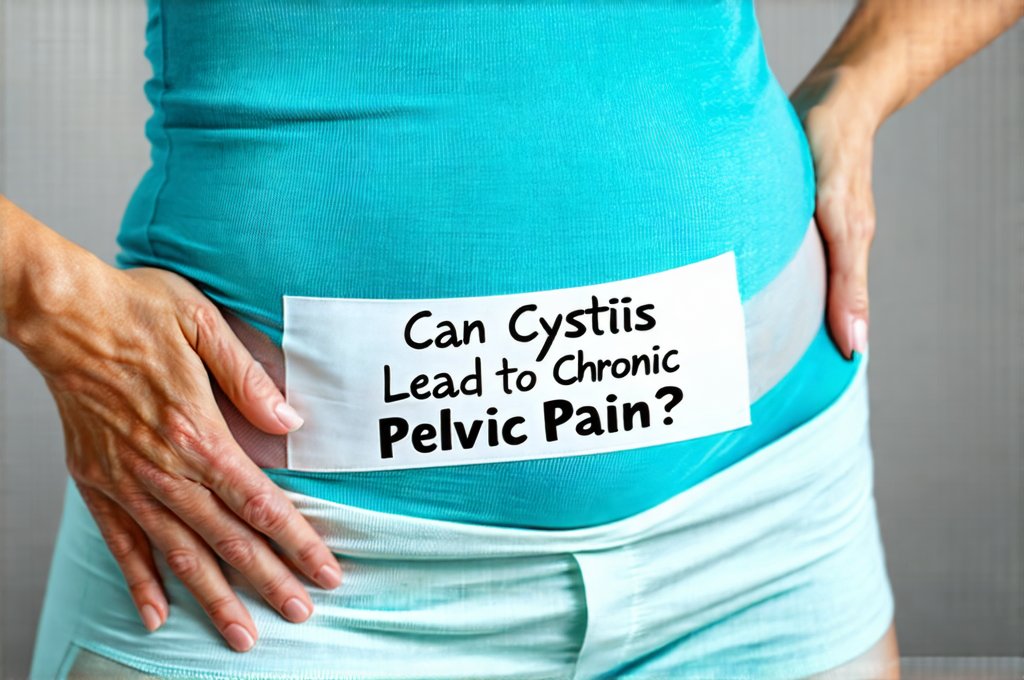Cystitis, often understood as a simple urinary tract infection (UTI), can be far more complex than many realize. While commonly associated with uncomfortable symptoms like burning sensations during urination and frequent urges to go, the implications of recurrent or poorly managed cystitis extend beyond immediate discomfort. Increasingly, healthcare professionals are recognizing a strong link between chronic cystitis – particularly interstitial cystitis/bladder pain syndrome (IC/BPS) – and the development of persistent pelvic pain that significantly impacts quality of life. Understanding this connection is crucial for both individuals experiencing these conditions and those involved in their care, paving the way for more effective diagnosis and management strategies.
The challenge lies in the multifaceted nature of both cystitis and chronic pelvic pain. What begins as an acute infection can sometimes evolve into a chronic condition with symptoms that are not easily explained by traditional UTI criteria. Moreover, the overlap between IC/BPS and other conditions like endometriosis, irritable bowel syndrome (IBS), and fibromyalgia often makes accurate diagnosis difficult. This article will explore the relationship between cystitis – its various forms – and the potential for it to lead to chronic pelvic pain, outlining contributing factors, diagnostic approaches, and available management options. It’s important to note that this information is for educational purposes only and should not be considered medical advice; always consult with a qualified healthcare professional for any health concerns.
Understanding Cystitis and its Variants
Cystitis broadly refers to inflammation of the bladder. However, it manifests in different forms, each requiring distinct consideration when assessing potential links to chronic pelvic pain. The most common type is acute bacterial cystitis, typically caused by Escherichia coli (E. coli) bacteria entering the urinary tract. Symptoms are usually swift and include a strong urge to urinate, burning sensation during urination, cloudy urine, and potentially lower abdominal discomfort. This form generally responds well to antibiotic treatment.
However, two other forms pose greater challenges in relation to chronic pain: recurrent cystitis and interstitial cystitis/bladder pain syndrome (IC/BPS). Recurrent cystitis involves multiple episodes of acute bacterial cystitis within a certain timeframe—often defined as three or more infections within a year. While each episode may respond to antibiotics, the repeated inflammation can potentially sensitize the pelvic region over time, increasing vulnerability to chronic pain development. IC/BPS is a distinctly different condition; it’s characterized by chronic bladder discomfort, often accompanied by urgency and frequency, but without evidence of bacterial infection. Its underlying causes are still not fully understood, and it’s believed to involve multiple factors including nerve damage, immune system dysfunction, and epithelial barrier defects.
The distinction between these forms is vital because the mechanisms driving pain differ significantly. Acute cystitis involves inflammation triggered by bacteria, while IC/BPS appears to stem from a complex interplay of biological processes that lead to chronic bladder wall changes and heightened sensitivity. This difference impacts treatment approaches and the likelihood of developing long-term pelvic pain. The ongoing inflammation in both recurrent and chronic forms can contribute to central sensitization – a phenomenon where the nervous system becomes hyperresponsive, amplifying pain signals even after the initial trigger has subsided. Understanding how [trauma] might impact these conditions is also important.
Chronic Pelvic Pain: A Complex Picture
Chronic pelvic pain (CPP) is defined as persistent or intermittent pain felt in the lower abdomen, perineum, or sacral region lasting for at least six months. It’s a widespread issue affecting both men and women, though prevalence rates differ due to anatomical and physiological factors. Unlike acute pain, which serves as a warning signal, CPP often lacks an identifiable cause, making diagnosis and management challenging. The pain can be described in various ways – sharp, dull, aching, burning, or pressure-like – and its intensity can fluctuate significantly.
CPP is rarely attributable to a single factor. It’s typically multifactorial, meaning it arises from the interaction of biological, psychological, and social influences. Contributing factors include musculoskeletal issues, nerve entrapment, endometriosis (in women), prostate problems (in men), bowel disorders like IBS, previous surgeries or trauma, and – importantly – chronic bladder conditions like IC/BPS. The interconnectedness between these systems means that pain in one area can trigger or exacerbate pain in others, creating a vicious cycle.
The impact of CPP extends beyond physical discomfort. Chronic pain can significantly disrupt daily life, leading to fatigue, sleep disturbances, anxiety, depression, and impaired social functioning. It can also affect relationships and work productivity. Effective management requires a holistic approach that addresses not only the physical symptoms but also the psychological and emotional consequences of living with chronic pain.
Diagnostic Challenges and Approaches
Diagnosing the link between cystitis and CPP is often complex due to overlapping symptoms and the lack of definitive biomarkers for many conditions. A thorough medical history, including details about urinary symptoms, bowel habits, sexual function, and past surgeries or traumas, is crucial. Physical examination, including pelvic floor muscle assessment, can help identify musculoskeletal contributions to pain.
- Urine tests: While standard urine cultures may be negative in IC/BPS, they are essential for ruling out bacterial infections and identifying other potential causes of urinary symptoms.
- Cystoscopy: This procedure involves inserting a small camera into the bladder to visualize the lining. In IC/BPS, characteristic changes like Hunner’s lesions (small ulcers) may be observed, but their absence doesn’t rule out the diagnosis.
- Potassium Sensitivity Test: Used in some diagnostic protocols for IC/BPS, this test involves instilling potassium chloride solution into the bladder to assess pain response.
- Pelvic Floor Muscle Function Testing: Evaluates muscle strength, coordination and function as dysfunctions can contribute to pelvic pain.
- Imaging Studies: MRI or CT scans may be used to rule out structural abnormalities or other potential causes of pelvic pain.
A key challenge is differentiating IC/BPS from other conditions with similar symptoms. Differential diagnosis is essential, involving careful consideration of alternative explanations and appropriate investigations. Often a “diagnosis of exclusion” is required—meaning IC/BPS is considered when other possibilities have been ruled out. Furthermore, recognizing the presence of comorbidities (co-occurring conditions) like IBS or fibromyalgia is vital for comprehensive management. These conditions can significantly influence pain perception and treatment outcomes. Considering whether [cystitis] could also lead to inflammation is important.
Managing Chronic Pelvic Pain Related to Cystitis
Managing CPP related to cystitis requires a multidisciplinary approach tailored to the individual’s specific needs. Treatment focuses on reducing symptoms, improving function, and addressing underlying contributing factors. There is no single “cure” for IC/BPS or chronic pelvic pain; instead, management involves a combination of strategies.
- Lifestyle Modifications: Avoiding bladder irritants (caffeine, alcohol, acidic foods, artificial sweeteners), managing stress levels through techniques like yoga or meditation, and maintaining a healthy diet can all help reduce symptoms.
- Pelvic Floor Rehabilitation: Physical therapy focusing on pelvic floor muscle strengthening and relaxation exercises can address musculoskeletal contributions to pain and improve bladder control.
- Medications: Depending on the specific diagnosis and symptom presentation, medications may include:
- Pain relievers (over-the-counter or prescription)
- Antidepressants (to manage chronic pain and mood disorders)
- Bladder instillations (for IC/BPS – involving injecting medication directly into the bladder)
- Muscle relaxants (to alleviate pelvic floor muscle tension).
- Neuromodulation: Techniques like transcutaneous electrical nerve stimulation (TENS) or sacral neuromodulation may help modulate pain signals.
- Psychological Support: Cognitive behavioral therapy (CBT) and other forms of psychotherapy can assist in coping with chronic pain, managing stress, and improving quality of life.
Bold statement: It is crucial to remember that effective CPP management requires a patient-centered approach, involving open communication between the individual and their healthcare team. There will likely be periods of trial and error as different treatment options are explored to find what works best for each person.
It’s also important to emphasize the role of self-management strategies. Learning techniques to manage pain flares, practicing relaxation exercises, and maintaining a healthy lifestyle can empower individuals to take control of their condition and improve their overall well-being. A collaborative approach involving healthcare professionals, physical therapists, psychologists, and – most importantly – the individual themselves is essential for achieving optimal outcomes in managing chronic pelvic pain related to cystitis.
It’s also important to consider if [UTIs] have contributed to your symptoms. Additionally, it’s crucial to understand whether [chronic kidney stones] could be a contributing factor. Finally, understanding how [trauma] might impact the experience of chronic pain is essential for holistic care.





















